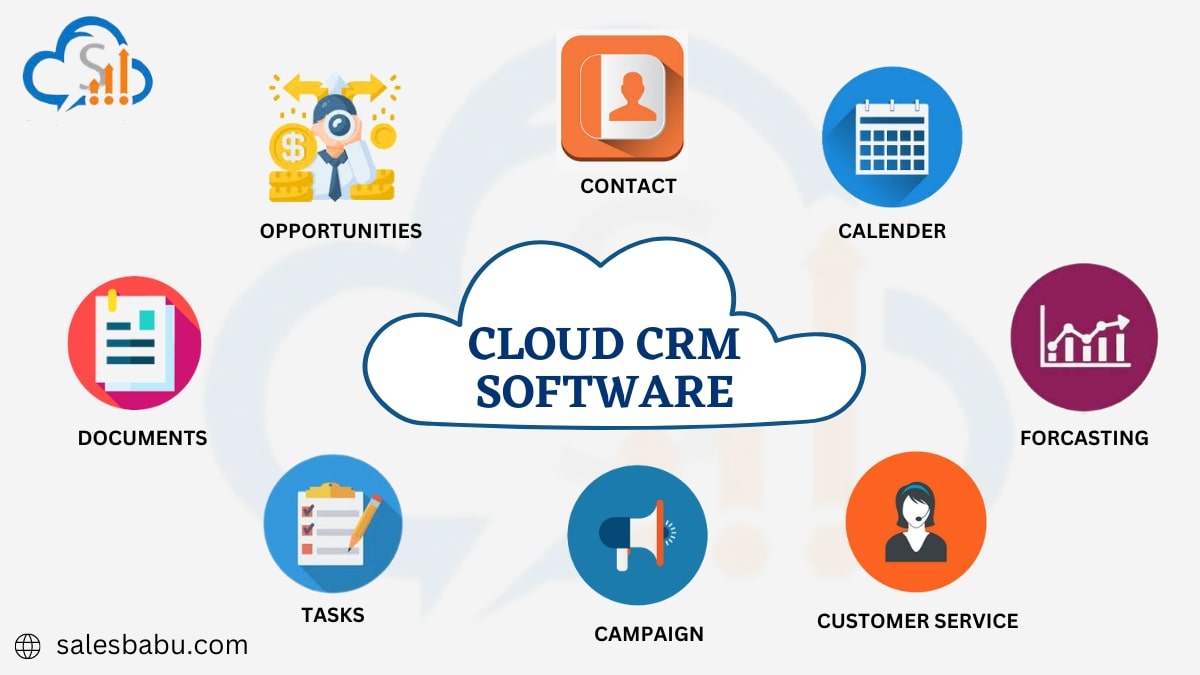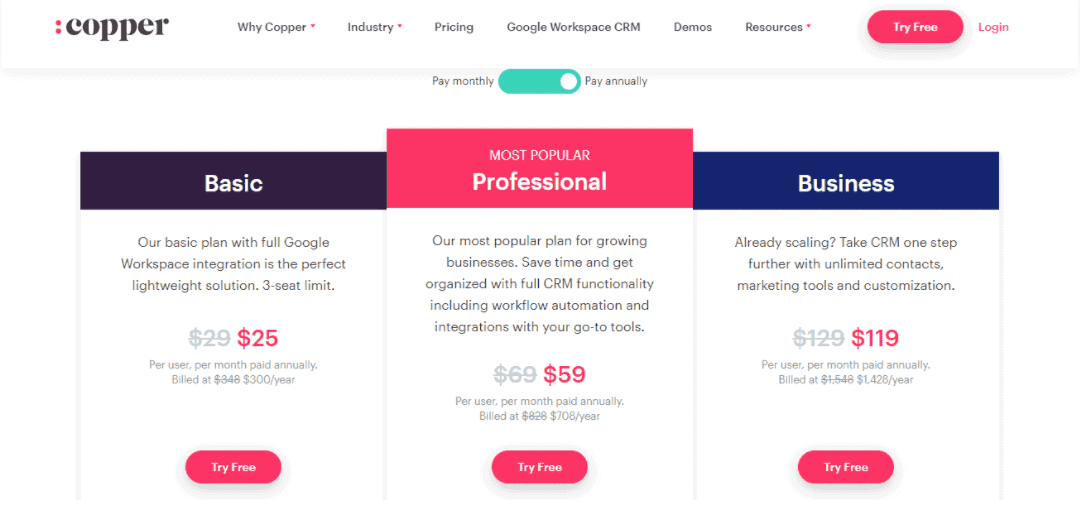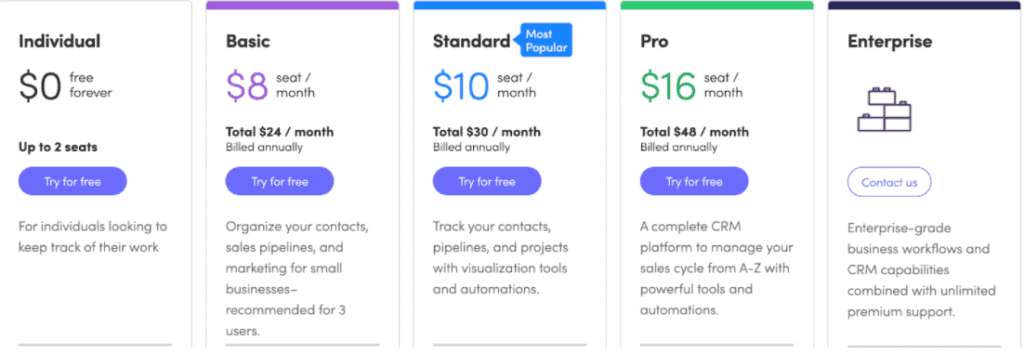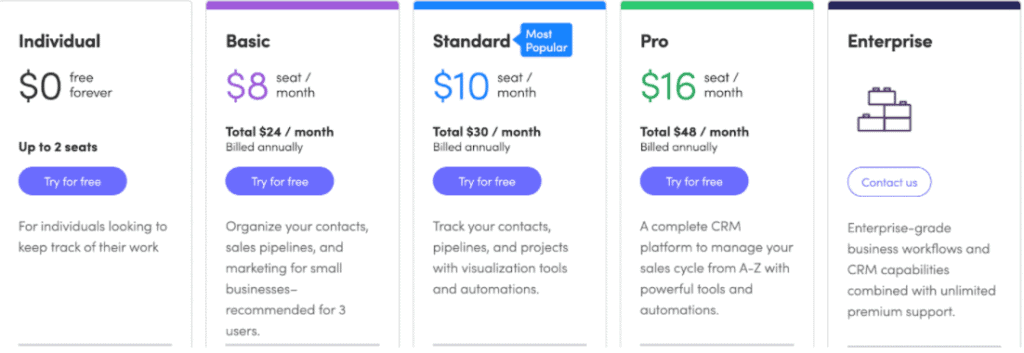Best crm cloud – Best cloud CRM solutions are transforming how businesses manage customer relationships. This guide delves into the critical aspects of selecting, implementing, and maximizing the return on investment (ROI) of a cloud-based CRM system. We’ll explore key features, security considerations, scalability options, and cost-effectiveness, equipping you with the knowledge to make an informed decision for your business needs.
From defining the ideal criteria for a “best” CRM to outlining the essential features for different user roles (sales, marketing, and customer service), we’ll cover the spectrum of considerations. We’ll also analyze different pricing models, discuss seamless integration with other business tools, and highlight the importance of data security and privacy compliance. Ultimately, this guide aims to empower you to choose a cloud CRM that aligns perfectly with your business goals and drives significant growth.
Defining “Best” in Cloud CRM

Selecting the “best” cloud CRM isn’t about finding a one-size-fits-all solution. The ideal system depends heavily on a company’s specific needs, size, and goals. A thorough evaluation requires careful consideration of several key factors to ensure a successful implementation and positive return on investment.
Choosing the right cloud CRM involves a multifaceted evaluation process. Factors such as scalability, security, user-friendliness, and cost all play a crucial role in determining the best fit for a particular organization. Scalability ensures the system can adapt to growing business needs without significant disruption or added expense. Robust security measures are paramount to protect sensitive customer data.
Ease of use impacts user adoption and overall productivity, while cost-effectiveness ensures the solution aligns with the company’s budget.
Essential Cloud CRM Features by User Role
A high-performing cloud CRM offers a comprehensive suite of features tailored to different user roles within an organization. These features contribute to improved efficiency, enhanced collaboration, and ultimately, better customer relationships.
- Sales: Contact management, lead tracking and scoring, opportunity management, sales forecasting, reporting and analytics, mobile access, integration with other sales tools.
- Marketing: Marketing automation, campaign management, lead nurturing, email marketing, social media integration, website analytics integration, A/B testing, reporting and analytics.
- Customer Service: Case management, ticketing system, knowledge base integration, self-service portal, live chat, email support, phone support integration, reporting and analytics.
CRM Needs Vary by Business Size
The specific CRM requirements vary significantly depending on the size and stage of a business. Small businesses often prioritize simplicity and affordability, while larger enterprises require more advanced functionalities and scalability.
- Small Businesses (1-50 employees): Focus on basic contact management, lead tracking, and simple sales reporting. Ease of use and affordability are key considerations. Examples include startups or small retail shops.
- Medium-Sized Businesses (50-250 employees): Require more sophisticated features like marketing automation, sales forecasting, and customer segmentation. Integration with other business systems is often a priority. Examples include growing tech companies or regional distributors.
- Large Enterprises (250+ employees): Demand highly scalable and customizable solutions with advanced analytics, complex workflows, and robust security features. Integration with multiple systems across different departments is essential. Examples include multinational corporations or large financial institutions.
Cloud CRM Pricing Models
Understanding the different pricing models is crucial for selecting a cost-effective CRM solution. Each model has its own advantages and disadvantages, impacting budget planning and long-term costs.
| Pricing Model | Features Included | Target User | Pros & Cons |
|---|---|---|---|
| Per-User | Basic CRM functionality, often with tiered feature access based on user role. | Small to medium-sized businesses, organizations with variable user needs. | Pros: Scalable, predictable monthly cost. Cons: Can become expensive with a large team, may lack advanced features. |
| Tiered | Multiple pricing tiers offering increasing features and functionality at higher price points. | Businesses with varying needs and budgets, allowing for growth and feature upgrades. | Pros: Flexibility, allows scaling up as needed. Cons: Can be confusing, may require careful planning to avoid overspending. |
| Flat Fee | All features included for a fixed monthly or annual price. | Businesses with predictable user numbers and consistent feature requirements. | Pros: Simple pricing, all-inclusive access. Cons: May be less cost-effective for smaller teams or those with limited feature needs, lacks flexibility. |
Key Features of Top Cloud CRMs

Cloud-based CRMs have revolutionized how businesses manage customer interactions. Their flexibility, scalability, and accessibility offer significant advantages over traditional on-premise systems. This section will delve into the core features of leading cloud CRMs, highlighting their benefits and comparing their user interfaces.
Cloud CRM Integration with Other Business Tools
Integrating a cloud CRM with other business tools significantly enhances operational efficiency and data accuracy. For example, connecting a CRM with a marketing automation platform allows for automated email campaigns triggered by specific customer actions within the CRM. This streamlined approach improves lead nurturing and conversion rates. Similarly, integrating with e-commerce platforms provides a unified view of customer interactions across all channels, from initial website visit to purchase and post-sale support.
This holistic perspective empowers businesses to personalize customer experiences and optimize sales strategies. The real-time data synchronization eliminates manual data entry, reducing errors and saving valuable time. Companies like Salesforce, with its AppExchange, offer extensive integration capabilities, showcasing the power of a connected business ecosystem.
Customer Relationship Management Functionalities
Effective CRM functionalities are crucial for optimizing customer interactions. Contact management provides a centralized repository for all customer information, ensuring consistent and personalized communication. Lead nurturing involves systematically engaging prospects through targeted content and communication, guiding them through the sales funnel. Sales pipeline management provides a visual representation of the sales process, allowing for efficient tracking of opportunities and identification of bottlenecks.
Robust reporting and analytics capabilities provide valuable insights into sales performance, customer behavior, and overall business effectiveness. For instance, analyzing sales pipeline data can highlight which stages are experiencing delays, enabling timely intervention and improved conversion rates. This data-driven approach facilitates strategic decision-making and continuous improvement.
Comparison of User Interfaces Across Three Leading Cloud CRM Platforms
While functionality is paramount, user interface (UI) significantly impacts user adoption and productivity. Let’s compare three leading platforms: Salesforce, HubSpot, and Zoho CRM. Salesforce, known for its comprehensive features, often presents a more complex UI, potentially requiring a steeper learning curve for new users. However, its customizable dashboards and advanced features cater to larger organizations with diverse needs.
HubSpot, while also feature-rich, prioritizes a more intuitive and user-friendly interface, particularly appealing to smaller businesses and marketing teams. Its clean design and straightforward navigation enhance user experience. Zoho CRM offers a balance between functionality and simplicity, providing a relatively easy-to-learn interface with a wide range of features, making it suitable for a broad spectrum of businesses. The optimal choice depends on the specific needs and technical expertise of the organization.
Five Common CRM Features and Their Impact on Business Efficiency
Implementing a CRM system equipped with these features can significantly boost efficiency.
- Contact Management: Centralized storage and organization of customer data eliminates data silos and ensures consistent communication, leading to improved customer service and stronger relationships.
- Lead Management: Tracking and nurturing leads through automated workflows increases conversion rates and reduces wasted effort on unqualified prospects.
- Sales Pipeline Management: Visualizing the sales process allows for proactive identification of bottlenecks and improved forecasting accuracy, optimizing sales cycles.
- Reporting and Analytics: Data-driven insights into sales performance and customer behavior inform strategic decisions, improving overall business effectiveness.
- Automation: Automating repetitive tasks such as email marketing and data entry frees up valuable time for sales and marketing teams to focus on higher-value activities.
Security and Scalability in Cloud CRM: Best Crm Cloud
Choosing a cloud-based CRM involves careful consideration of security and scalability. These factors are critical for protecting sensitive business data and ensuring the system can adapt to your company’s growth. A robust CRM solution must offer both strong security measures and the ability to handle increasing data volumes and user demands without performance degradation.Data security and privacy are paramount in cloud-based CRM systems.
The nature of cloud computing means your data is stored and processed on servers managed by a third-party provider. This necessitates a thorough understanding of the provider’s security protocols and compliance with relevant regulations.
Data Security and Privacy in Cloud CRMs
Cloud CRM providers must implement robust security measures to protect customer data from unauthorized access, breaches, and misuse. This includes measures such as encryption both in transit and at rest, access controls based on roles and permissions, regular security audits, and intrusion detection systems. Compliance with regulations like the General Data Protection Regulation (GDPR) in Europe and the California Consumer Privacy Act (CCPA) in the United States is crucial.
These regulations stipulate stringent requirements for data handling, including consent management, data subject access requests, and data breach notification procedures. Failure to comply can result in significant financial penalties and reputational damage.
Potential Security Risks and Mitigation Strategies
Despite robust security measures, cloud CRMs still face potential security risks. These include unauthorized access through phishing attacks or weak passwords, data breaches due to vulnerabilities in the system or third-party applications, and insider threats from malicious employees. Mitigation strategies include implementing multi-factor authentication, regular security awareness training for employees, robust access control policies, and continuous monitoring of the system for suspicious activity.
Employing a reputable provider with a proven track record in security is also essential. Regular security audits and penetration testing can further identify and address potential weaknesses.
Scalability and Business Growth
Scalability is the ability of a CRM system to handle increasing amounts of data, users, and transactions without compromising performance. As a business grows, its CRM needs will inevitably expand. A scalable CRM can seamlessly adapt to this growth, ensuring the system remains efficient and responsive. Conversely, a non-scalable system can become a bottleneck, hindering productivity and potentially impacting business growth.
Choosing a CRM provider that offers flexible scalability options is therefore critical for long-term success. This flexibility can manifest in various ways, such as adding more users, increasing storage capacity, or integrating with other business applications.
Scalability Comparison of Cloud CRM Providers
| Provider Name | Scalability Model | Pricing Structure | Limitations |
|---|---|---|---|
| Salesforce | Highly scalable, offers various plans and add-ons to accommodate growth. | Subscription-based, with pricing varying based on features and users. | Can become expensive for very large enterprises with extremely high data volumes. Complexity can be a challenge for smaller businesses. |
| Microsoft Dynamics 365 | Scalable through modular design, allowing businesses to add specific functionalities as needed. | Subscription-based, with various licensing options for different user roles and modules. | Integration with other Microsoft products is a strength but may be a limitation for businesses not heavily invested in the Microsoft ecosystem. |
| HubSpot | Scalable through tiered plans, offering increased features and capacity as the business grows. | Subscription-based, with a freemium option and several paid tiers. | While scalable, the highest tiers may still have limitations for extremely large enterprises. May require additional integrations for more complex functionalities. |
Implementation and Integration of Cloud CRM

Successfully implementing a cloud CRM system requires careful planning and execution. It’s a multifaceted process that goes beyond simply choosing the right software; it involves data migration, user training, system integration, and ongoing maintenance to ensure the CRM delivers its promised value. A well-executed implementation can significantly improve sales efficiency, customer relationships, and overall business performance. Conversely, a poorly managed implementation can lead to wasted resources and user frustration.Implementing a new cloud CRM system involves several key steps.
These steps, when executed effectively, lay the groundwork for a smooth transition and successful adoption.
Data Migration
Data migration is a crucial step in CRM implementation. It involves transferring existing customer data from legacy systems into the new cloud CRM. This process requires careful planning and execution to minimize data loss and ensure data accuracy. The steps typically involve data cleansing, transformation, and validation. Data cleansing removes inconsistencies and duplicates, ensuring data integrity.
Data transformation involves converting data into a format compatible with the new CRM. Finally, data validation verifies the accuracy and completeness of the migrated data. Failure to thoroughly cleanse and validate data before migration can lead to inaccurate reporting and flawed business decisions based on faulty information. For example, migrating customer data with inconsistent address formats could lead to failed marketing campaigns or inaccurate sales forecasting.
A well-defined data migration plan, including thorough testing and quality assurance, is essential to avoid these problems.
User Training
Effective user training is paramount for successful CRM adoption. Comprehensive training ensures users understand the system’s functionalities and can effectively utilize its features. This typically involves a combination of online tutorials, instructor-led sessions, and hands-on practice. The training should be tailored to different user roles and skill levels, ensuring that each user receives the necessary information and support to confidently use the system.
For instance, sales representatives require training on features related to lead management and sales forecasting, while customer service representatives need training on features related to case management and customer interaction. A phased rollout of training, starting with key users and then expanding to the wider team, can also facilitate a smoother transition and allow for continuous feedback and improvement.
Ongoing Maintenance
Ongoing maintenance is essential for keeping the CRM system running smoothly and effectively. This includes regular system updates, data backups, and performance monitoring. Regular updates ensure the system remains secure and incorporates the latest features and improvements. Data backups provide a safety net in case of data loss or system failure. Performance monitoring helps identify and resolve any performance bottlenecks or issues.
Proactive maintenance prevents potential problems and ensures the CRM system continues to meet the evolving needs of the business. For example, neglecting regular updates could expose the system to security vulnerabilities, while ignoring performance issues could lead to slow response times and user frustration.
Best Practices for Successful CRM Implementation and Integration
Successful CRM implementation relies on several best practices. These practices help ensure the project stays on track, within budget, and delivers the expected results. A well-defined project plan with clear goals, timelines, and responsibilities is crucial. This plan should include risk mitigation strategies to address potential challenges. Active user involvement throughout the implementation process ensures the system meets the needs of the users.
Regular communication and feedback mechanisms keep stakeholders informed and allow for adjustments as needed. Finally, choosing a reputable vendor with proven expertise in CRM implementation can significantly improve the chances of success. Ignoring these best practices can lead to project delays, cost overruns, and ultimately, a system that fails to meet its objectives.
Common Challenges and Solutions, Best crm cloud
Several challenges can arise during CRM implementation. One common challenge is data quality issues. Inconsistent or incomplete data can lead to inaccurate reporting and poor decision-making. The solution is to implement robust data cleansing and validation processes before migration. Another common challenge is user resistance to adopting the new system.
This can stem from a lack of training or understanding of the system’s benefits. The solution is to provide comprehensive user training and highlight the system’s value proposition. Resistance can also stem from fear of job security or workload increases. Addressing these concerns directly and proactively can help alleviate user resistance. Finally, inadequate integration with existing systems can create data silos and workflow inefficiencies.
The solution is to carefully plan the integration process and select a CRM system that offers seamless integration capabilities.
Integrating Cloud CRM with Existing Systems
Integrating a cloud CRM with existing systems requires a well-defined strategy. This process ensures data flows smoothly between different systems, eliminating data silos and improving overall efficiency. A phased approach, starting with the most critical integrations, is often recommended. APIs (Application Programming Interfaces) are commonly used to facilitate data exchange between systems. Data mapping is crucial to ensure data consistency and accuracy across systems.
Thorough testing is necessary to validate the integration’s functionality and identify any potential issues. Failure to properly integrate the CRM with existing systems can lead to data inconsistencies, duplicated efforts, and a lack of a holistic view of the customer.
Cost and Return on Investment (ROI) of Cloud CRM
Implementing a cloud CRM system represents a significant investment, but the potential return can be substantial. Understanding the various cost components and how to calculate the ROI is crucial for making an informed decision. This section details the financial aspects of cloud CRM adoption and demonstrates how to assess its value.
Cost Components of Cloud CRM
The total cost of ownership for a cloud CRM system encompasses more than just the monthly subscription fee. Several factors contribute to the overall expenditure, including recurring and one-time costs. Accurate budgeting requires considering each component.
- Subscription Fees: These are recurring monthly or annual payments based on the chosen plan and number of users. Pricing models vary widely depending on features and functionality offered.
- Implementation Costs: This includes the time and resources spent on configuring the system, importing data, customizing workflows, and user training. Larger organizations with complex data migration needs will typically incur higher implementation costs.
- Training Expenses: Effective CRM usage requires proper training for all users. This can involve internal training sessions, external consultant fees, or online training modules. The cost depends on the size of the user base and the complexity of the system.
- Integration Costs: Integrating the CRM with existing software systems (e.g., marketing automation, accounting software) may involve additional fees for custom development or third-party integration tools. This is particularly relevant for businesses with established IT infrastructure.
- Ongoing Maintenance and Support: Most providers offer various support packages, including technical assistance, updates, and data backups. These services come with additional costs, and the level of support required will vary depending on the business’s technical capabilities.
Calculating the ROI of Cloud CRM
Calculating the ROI of a cloud CRM investment requires a careful assessment of both costs and benefits. A simplified ROI calculation can be represented as follows:
ROI = (Net Benefits – Total Costs) / Total Costs
Net benefits encompass improvements in sales, customer retention, operational efficiency, and reduced expenses. Total costs include all the components mentioned above. For example, if a company invests $10,000 in a cloud CRM and experiences a $25,000 increase in revenue due to improved sales efficiency, the ROI would be 150%.
Examples of Improved Sales and Retention
Cloud CRM systems can significantly enhance sales conversion rates and customer retention through better lead management, improved sales forecasting, and enhanced customer relationship management.For example, a company might see a 15% increase in sales conversion rates due to improved lead qualification and follow-up processes facilitated by the CRM. Similarly, a reduction in customer churn by 10% due to personalized communication and proactive customer support can lead to significant cost savings and revenue growth.
These quantifiable improvements directly contribute to a positive ROI.
Key Metrics for Tracking Cloud CRM Success
Tracking specific metrics is essential to monitor the effectiveness of the cloud CRM implementation and ensure it’s delivering the expected ROI.
- Sales Conversion Rate: Measures the percentage of leads that convert into paying customers.
- Customer Churn Rate: Indicates the percentage of customers lost over a specific period.
- Customer Lifetime Value (CLTV): Estimates the total revenue generated by a customer throughout their relationship with the business.
- Lead Response Time: Measures the time it takes to respond to inbound leads, a critical factor in lead conversion.
- Sales Cycle Length: Tracks the time it takes to close a deal, highlighting areas for improvement in the sales process.
Last Point

Choosing the best cloud CRM is a strategic decision that impacts every facet of your business. By carefully considering the factors discussed – from essential features and scalability to security and ROI – you can confidently select a system that optimizes your customer relationships, enhances operational efficiency, and fuels sustainable growth. Remember to prioritize your specific business needs and thoroughly evaluate potential solutions before making a commitment.
The right cloud CRM can be a game-changer for your organization.
Clarifying Questions
What is the difference between cloud CRM and on-premise CRM?
Cloud CRM is hosted on a third-party server, accessible via the internet, while on-premise CRM is installed and maintained on your own servers.
How much does cloud CRM typically cost?
Pricing varies greatly depending on features, users, and provider. Expect a range from basic free plans to several hundred dollars per user per month for enterprise solutions.
Can I integrate my existing software with a cloud CRM?
Most cloud CRMs offer integration capabilities with various applications through APIs or pre-built connectors. Check compatibility with your specific software.
What are the common security risks associated with cloud CRM?
Data breaches, unauthorized access, and data loss are potential risks. Choosing reputable providers with strong security measures is crucial.

